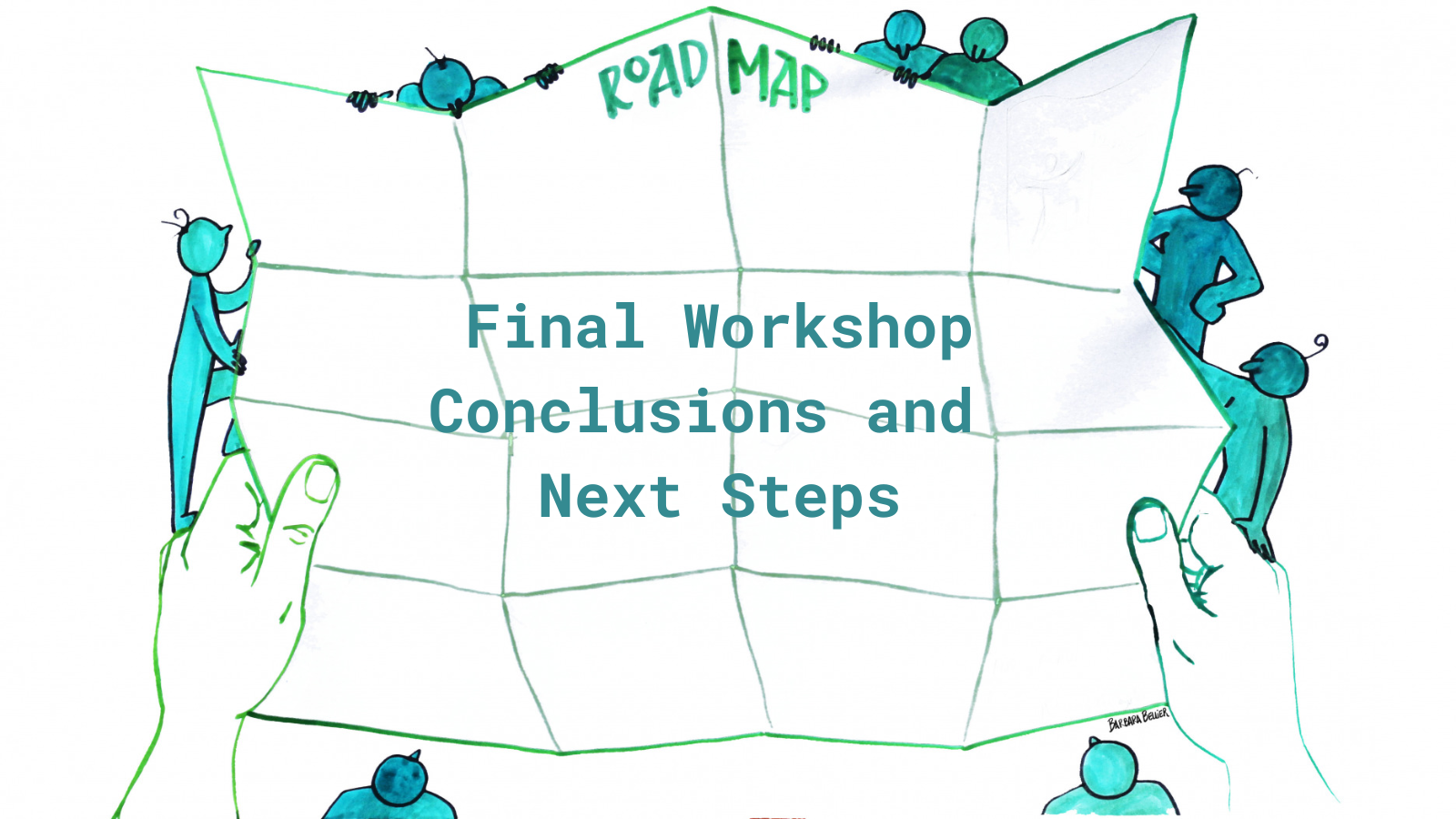EERAdata consortium organised its sixth and final workshop in Bergen, Norway.

The last session of the workshop consisted in a roundtable with the consortium's members and invited guests in which the following questions were adressed:
- Why and how to invest into data interoperability?
- How to solve the paradox between open data, data security, and competitive advantage, e.g., for enabling data-based business models and data-driven research?
The round table session was moderated and structured into three parts. First, participants where invited to give a short (provocative) statement. It was the starting point for an open discussion. The second part focused on exploring the two guiding questions, while the focus of the final part was on drawing conclusions.
Conclusions
Key issues:
- Lack of knowledge and misunderstandings about FAIR data. The technical experts for implementing FAIR data principles and suggesting standards are not well connected to the group of those deciding on necessary investments. The danger of creating an empty label around FAIR and open data is high. The problem is compounded by the fact that FAIRification initiatives are insufficiently coordinated in terms of top-down vs. bottom up but also across disciplines.
- Among the FAIR principles, interoperability is the crux of the matter. While findability and accessibility are handleable through distributed efforts, interoperability requires coordinated strategies and substantial investments. Single projects are charting undiscovered territory, but ultimately these islandic developments also contribute to the lack of interoperability. Lack of distributed responsibilities among the stakeholders (i.e. national institutions, intergovernmental institutions, academic, private and public sectors) adds to the problem.
- Trust concerns around data need to be identified and addressed, including future implications and consequences. This concerns the establishment of trust mechanisms to enable reuse and exchange between data stakeholders and supporting infrastructures. Moreover, solutions need to stand the test of time (e.g., it needs to be prevented that anonymized data can be traced back to individuals as new algorithms and alternative data enable the reconstruction of the original data).
Solutions - responsibilities for stakeholders and next steps:
- Society is the ultimate instance to approve societal changes, including pathways towards the future data-driven society. However, in order to be equipped for delivering on the task, citizens must be informed and skilled. In this way, the power of the digital crowd can be utilized.
- EU-level institutions - being responsible for the implementation of funding and tenders of the European Commission, they should increase their in-house knowledge about FAIR and open data (including connected implementation efforts and resource needs). It is a prerequisite to guide fund receivers on how to budget and implement realistic and useful FAIR data management practices. It also supports the interlinking of initiatives and projects across domains and scales. Streamlining repositories are useful in this respect. National governments - have the responsibility to strategically plan the coordination of FAIRification efforts within and across countries. Overall, the awareness among policy-planners and decision-makers about data interoperability and data trust has to be raised.
- National and international statistical offices - have the mandate to harmonize statistical efforts across distributed sources of data, suggest standards, and provide passive information on them. For example, industrial standards are an enabler for functioning market competition. As such, statistical offices play a key role in FAIRification and opening of data and should lead the standardization efforts and processes as a top-level coordinating institution.
- Universities and educational sector - undertake basic and applied research, educate future staff, and provide on-the-job training. Situated as such, they have the responsibility to serve as neutral chaperones observing implementation processes, make recommendations for standards, and ensuring that the necessary educational programs are developed and frequented (e.g., domain-specific data stewards, ubiquitous general data competencies) - educating students, staff, and the general public.
- Applied research institutes - have the mandate to promote and facilitate the applicability of scientific results. Situated as such, the responsibility to expedite a functioning interface between industry, policy, and academia lies with them. Awareness towards the value of FAIR and open data has to be systematically raised, becoming a by-default-matter.
- Industry - develop and realize business models around FAIR and open data services. Their responsibility lies in compliance with standards and regulations for transparency and trust into data. Based on their experiences, industry should flag early potentially arising issues.
- Cross-country research organizations and networks - bring together diverse stakeholders, which places them in the prime position for enabling communication across-the-board. Often directly linked to policy planning and decision-making, their responsibility lies in delivering key messages about the FAIRification process and its importance. Examples of overall relevant networks include the European Open Science Cloud, OpenAIRE, FAIR-IMPACT, CESSDA, and the Research Data Alliance. An example for a domain-specific network is the European Energy Research Alliance with access to the Directorate-General for Energy (DG Ener).
Last but not least, the FAIRification of data has to go hand in hand with the overall digitization of the real world. FAIRification implies the linking of existing standards in all aspects of life with persistent identifiers.